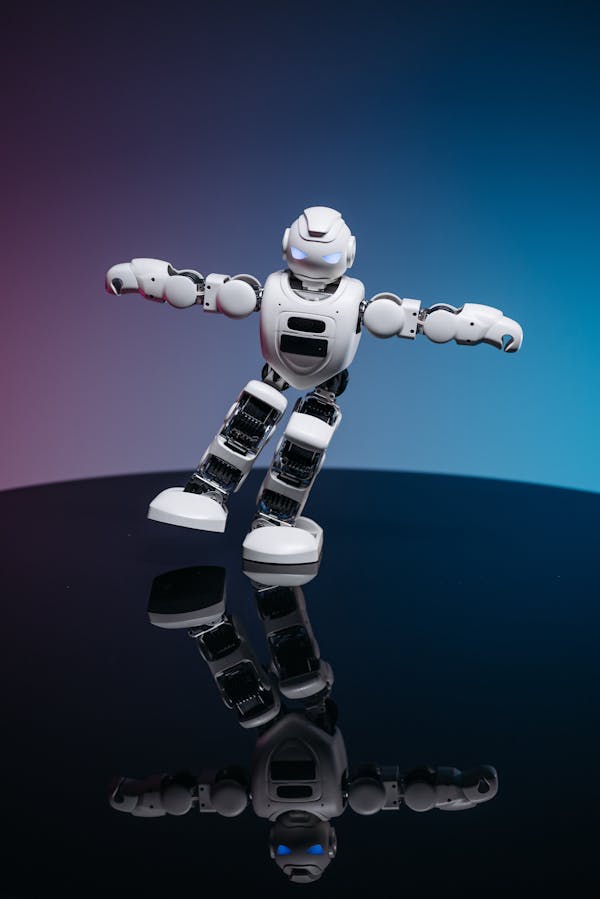AI is in use everywhere from smartphones with digital assistants to autonomous vehicles and online fraud detection systems. But what is it exactly?
Whether it’s analyzing data to make predictions, automating repetitive tasks or enhancing customer service, the possibilities are endless. AI is even powering businesses like Rubrik, a multi-cloud data control company. Find out more at ChatGPT Girlfriend.
Artificial Intelligence (AI)
Unlike traditional computers that follow preset instructions, AI systems learn and evolve by analyzing data. This enables them to recognize patterns and make predictions or decisions, improving their performance over time.
In the workplace, AI can help businesses automate repetitive tasks, connect with customers and streamline processes. In addition, it can improve decision-making by reducing human error and providing accurate, real-time results.

Using machine learning, AI can perform complex calculations faster than humans and identify trends in data to help guide business strategy. It can also predict equipment failure or maintenance needs, reduce risk through fraud detection and provide insights into customer sentiment. It can also enhance the user experience through chatbots and personalization of ads and content. However, as the technology becomes more pervasive, it’s essential to develop international standards for responsible use. This will ensure a safe, secure and transparent future for all. ISO/IEC JTC 1/SC 42 on artificial intelligence sets the stage for the development of those standards.
Machine Learning (ML)
Incorporating machine learning into business processes and applications can boost productivity, automate work and create a competitive advantage. However, the wrong AI platform can increase costs and limit effectiveness. Choosing the right one requires understanding which features are critical and how they fit into your overall goals.
Unlike traditional computer programs, AI systems learn and adapt on their own over time. This is because they are programmed to recognize patterns and correlations in data, rather than follow predetermined instructions.
(1950s) Alan Turing explores the mathematical possibilities of AI. (1997) Deep Blue, an IBM chess computer, defeats world champion Garry Kasparov. (2016) Google DeepMind’s AlphaGo beats world champion Lee Sedol in the ancient game of Go.
ML algorithms are used for speech and image recognition, natural language processing and other tasks. They are iterative, adjusting model weights autonomously until an acceptable level of accuracy is achieved. This enables them to process large amounts of data and make predictions without the need for human oversight.
Generative AI
Generative AI creates content on its own, using a variety of models and techniques. It can be used for a wide range of purposes, from chatbots that can respond to questions from customers to creating photorealistic art in specific styles and compositions. Generative AI also has a number of potential applications in science and medicine, including speeding up drug discovery by designing new drug compounds to test.
The training of generative AI can be complex, requiring large amounts of labeled data. This can be challenging, particularly in domains where data is scarce, sensitive or protected. Niche data companies are arising that specialize in creating synthetic datasets for generative AI training while preserving privacy and security.
The use of generative AI raises several ethical concerns. In the case of text-generating algorithms, these can be used to create false or misleading information (known as deepfakes) or even for fraud. Establishing robust ethical guidelines and developing AI literacy are key to mitigating these risks.
Deep Learning
Developing an AI application can be challenging. The algorithms involved are complex and require a deep understanding of mathematics and data structures. To begin, developers should work on smaller projects and hone their skills by building simple applications that perform repetitive tasks or connect with customers.
The Biden-Harris administration is promoting the responsible development of AI technology by calling for safety testing, labeling of AI content and efforts to create international standards. This multifaceted approach should ensure that generative AI is used responsibly to deliver business benefits, and not to circumvent privacy protections, exacerbate discrimination or violate civil rights and consumer freedoms. Applied AI uses intelligent automation to streamline and automate processes, reduce human error and free up resources for more strategic work. Some examples of this include targeted product recommendations, pricing optimization and identifying opportunities for sales growth through customer segmentation and demand forecasting. It also helps businesses manage maintenance schedules by tracking previous repairs and predicting future issues based on historical trends.

